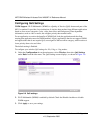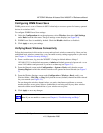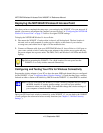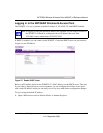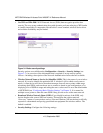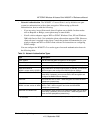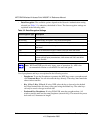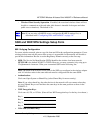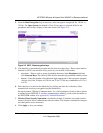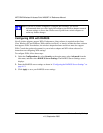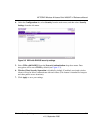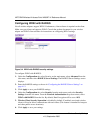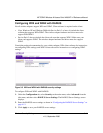
NETGEAR Wireless-N Access Point WN802T v2 Reference Manual
3-4 Wireless Security Settings
v1.0, September 2008
– Data Encryption. The available options depend on the Network Authentication setting
selected (see Table 3-1); otherwise, the default is None. The data encryption settings are
explained in the following table:
Use of passphrases and keys are explained in the following section:
– Passphrase. To use the Passphrase to generate the WEP keys, enter a passphrase and
click Generate Keys. You can also enter the keys directly. These keys must match the
other wireless stations.
– Key 1, Key 2, Key 3, Key 4. If using WEP, select the key to be used as the default
key. Data transmissions are always encrypted using the default key. The other keys
can only be used to decrypt received data.
– Preshared Key Passphrase. If using WPA-PSK, enter the passphrase here. All
wireless stations must use the same passphrase (network key). The network key must
be from 8 to 63 characters in length.
Table 3-2. Data Encryption Settings
Data Encryption Type Description
None No encryption is used.
64 bits WEP Standard WEP encryption, using 40/64 bit encryption.
128 bits WEP Standard WEP encryption, using 104/128 bit encryption.
152 bits WEP Proprietary mode that will only work with other wireless devices that support
this mode.
TKIP This is the standard encryption method used with WPA and WPA2.
AES This is the standard encryption method for WPA2.
TKIP + AES This setting supports both WPA and WPA2. Broadcast packets use TKIP. For
unicast (point-to-point) transmissions, WPA clients use TKIP, and WPA2
clients use AES.
Note: WEP and TKIP provide only legacy rates of operation. So, AES is the
recommended solution to use the 802.11n rates and speed.



